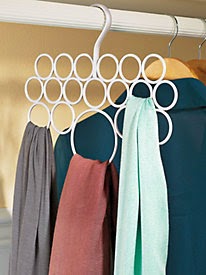1. Set a budget – And stick to it! While it may be tempting to upgrade your
hotel or room, or book reservations for fancy restaurant, you don’t want to run
out of money half-way through the trip.
What will hotel, flight and car rental cost? How much do you want to allot every day for meals? Keep to that budget. And if you come in under your budget, then
you’ll have some extra so spend at the end.
2. Make flight/hotel reservations – If you plan to
travel during the busy season, call well in advance for hotel and flight
reservations so you get what you want.
But be prepared to pay extra during the summer or over holidays when
rooms and flights are scarce. If you’re
traveling during a slow time, it’s still best to make reservations ahead of
time. There may be an event going on in
the area (like a conference), that might make finding a room more difficult.
3. Check flight restrictions – If you’re flying,
check the new security restrictions.
What can you pack in checked luggage?
How much can it weigh? What can
you take in your carry-on? How early do
you have to be there for the flight? Checking
these things ahead of time will mean less stress later.
4. Pack according to weather – Look at the weather
report before you leave. While you may
be expecting ideal weather, the area might be experiencing temperatures or
conditions above or below normal. Be
prepared so you don’t have to buy clothes while you’re out there.
5. Stop mail/newspaper delivery – Put in a delivery
stoppage for mail and newspapers. You
don’t want them piling up at your house while you’re gone. If you plan to have someone watching the
house, then make sure you tell your sitter to check for papers and mail and
bring them inside.
6. Notify local law enforcement – If you are going
to be gone, it’s good to notify your local law enforcement. They can do a drive-by to check on matters
and look for anything out of the ordinary.
7. Make arrangements for house/pets – If you have
pets, you’ll need to arrange for someone to walk/feed them, or you’ll have to
board them. If you’re traveling during a
busy time, call sitters/boarders well in advance to reserve your spot. If you’re going to have someone watch your
house, give them the security codes/keys, etc. they will need, and make a list of
emergency numbers for them at the house.
8. Pay bills before you leave – Check to see if
anything will be coming due while you are gone, and pay ahead of time, or
schedule payments with online billpay.
9. Confirm reservations – Before you leave, confirm
ALL travel reservations. Sometimes
flights change last minute, or hotels lose your booking, or car rentals set
aside a compact car instead of a minivan.
You don’t want to be caught stranded or inconvenienced.
10.
Clean your house/fridge – What’s better than
coming home to a nice clean house after a restful vacation? You’ll have enough to do to catch up with laundry, mail, phone
calls, etc., without having to clean your house, too.
11.
Don’t advertise on Facebook – I can’t stress
this enough!! Don’t tell the world you are going on vacation for two
weeks! It is an open invitation to
thieves. Even if your posts are private,
friends of friend of friends can sometimes see your posts through notifications. Your address is public record. Thieves will find you.
Finally, enjoy yourself!
And if something does go wrong, accept it and move on. There is always a solution.



